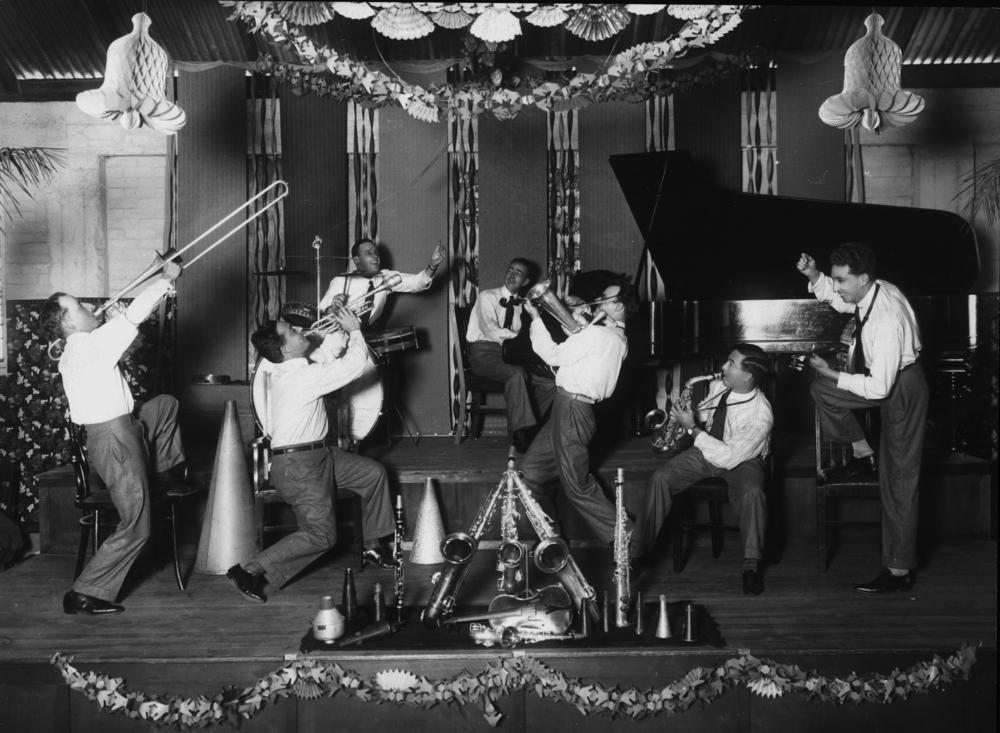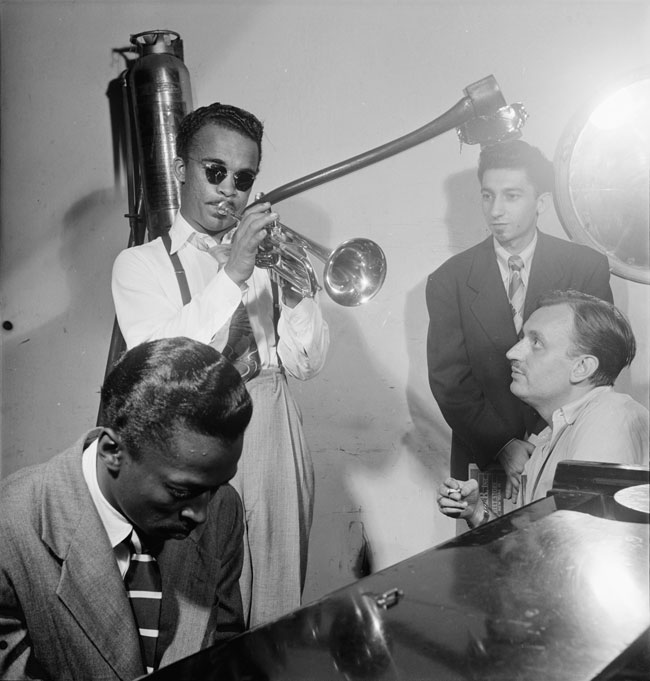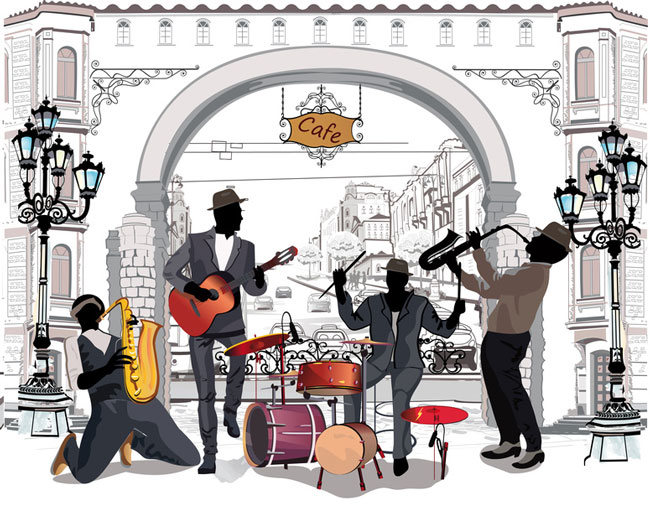Jazz has been around since the beginning of the 20th century. Begotten from a union of Ragtime and the Blues, Jazz has delighted and beguiled audience for over a hundred years. Jazz began in New Orleans with dance and brass marching bands. It created geniuses and legends during this period, with performers seeking to entertain and broaden the horizons of what was hailed by some as one of America’s original forms of art.
Roaring Begin of the Jazz Era
Early Jazz was powerfully both as an influence and concern in American society. It created fear among some as a corrupting influences and a degrader of music into a form of popular noise. On the other hand, Bebop was a style of music that offered new ideals on chord arrangements and new tonal sounds. It brought otherwise segregated communities of blacks and whites together. It also provided a means for the black community to gain positive attention and offer upward mobility for black performers who otherwise would have suffered from a low-ceiling career.

Louis Armstrong
Louis Armstrong, one of the artists who began during this era, was both a musician, trumpeter, and singer. Considered a founding father of Jazz because of his influence as a composer and performer in the genre, Armstrong was renowned for his improvisational styles and easily recognizable through his gravel vocals. Armstrong was a highly charismatic stage performer. One of his most engaging pieces of Jazz he created and performed was “Basin Street Blues.” The tune consisted of elements of traditional song composition, with Armstrong singing sporadically throughout, along with solo improvisations with trumpet. This track blends different traditions of Jazz into a unified celebration of the Jazz sound.
Jelly Roll Morton was another legendary figure of early Jazz. Morton was an early jazz pianist, composer, and band leader. He was well recognized as a founding father of Jazz. Morton’s genius was balanced his boastfulness and hubris. He claimed to have invented Jazz in 1902 and maintained his assertion throughout his life. On his most impressive compositions is “West End Blues.” As a mid-tempo brass band instrumental, this song swings and rocks gently from trumpet to cornet while the band saunters forward between solos and ending with several notes of piano. The composition demonstrates Morton’s ability to write for several instruments while stirring numerous melodies together under a unifying theme.

Crystal Palace Orchestra playing in Brisbane about 1929
By the 1920s, America had passed into law the prohibition against Alcohol and embraced Jazz as its new bad habit. Thus, this was the era celebrated as the “Jazz Age.” Still seen an immoral and an assault against traditional values of the previous century, Jazz became a forbidden fruit to be relished while enjoying a drink in a Speakeasy—illicit and secret clubs where people could enjoy liquor. By the 1930s’, Jazz clubs like Duke Ellington’s Cotton Club became centers for Jazz artists and paramours alike. Large swing bands dominated the scene while brilliant soloist formed groups and became famous band leaders.
Count Basie was a Jazz pianist, organist, composer, and bandleader. He was taught piano by his mother when he was a child. Basie dropped out of school to perform in Vaudeville and played as part of accompaniments for silent movie theaters. By the middle of the 1920s, he was performing in Harlem and touring with bands throughout the U.S. In 1935, he formed his own Jazz orchestra and led that group for nearly fifty years, developing innovations like “split” tenor saxophones. His composition “One O’clock Jump” demonstrates his keen eye for arranging solos with large bands and creating a smooth, swinging sound that is ideal both for dancing and close listening.
Cab Calloway, another legend during this era, was a Jazz singer and bandleader. He was well-known for his regular appearance at the Cotton Club and as a high energy scat singer. His band was originally called “The Missourians” but later became known as “Cab Calloway and His Orchestra.” As with many bands, Calloway gave his soloists ample space to lead its members; however, many of his compositions were focused around vocals with Calloway taking the lead. “Hep Cat’s Love Song” was a strong example of Callaway’s style, featuring band members solos , with Calloway chiming in with vocals halfway through the performance. The song is both light in its themes and tone, yet complex in composition and improvisation.
Bebop and the Other New Jazz Visions
Throughout the 1940s’, Jazz would transcendent its popularity and reach for the experimental fringes of its sound. Bebop came into this new horizon in Jazz as a musician’s music. Distinctly different from danceable Jazz of Calloway and Ellington, this sub-genre was seen more as a musical art form and was more focused on creating something new and original, contrasting from music that was created for popular audiences and commercial rewards.

Louis Jordan
Bebop in many ways could be seen as a response to Swing and a major influence on the counter cultural of its era— the Hipster/ Hep Cat culture and Beat Writer revolution. Hearing a new art form in the music of Bebop musicians, many Beat writers cited these music artists as prime influences on their writing. Allen Ginsberg claimed Lester Young had a major impact on “Howl” and Jack Kerouac claimed Dexter Gordon and Wardell Gray as prime influencers for “On The Road.”
Charlie Parker, who was also known as “Yardbird” or “Bird,” was a Jazz saxophonist and composer. He was considers a highly influential Jazz soloist and pivotal in the development of Bebop. Parker introduced harmonic ideas like passing chords, chord substitutions, and chord variants that were beyond the composers of the day. An icon in hipster subculture and among the Beats, Parker iconified the image of the Jazz musician as an artist and innovator. His composition “Bird Gets the Worm,” showcases his virtuoso with the saxophone, focusing on a hyper tempo that jitters from note to note and refuses to relinquish its energy, as melody is traded from sax to piano and back. The number also features Parker’s whim for incorporating his nickname into his songs.
Earl Hines, who was known as “Fatha,” was a Jazz pianist and bandleader. He is considered a prime influence on Jazz piano and inspired Jazz pianist for years afterwards. He is credited with creating the modern piano sound. In his composition “Bernie’s Tune,” Hines saunters through a swinging jazz melody, accentuating throughout with frequent improvisations while accompanied by moderate tempo snare drum and bass. The performance is filled with a variety of melodies and demonstrates Hines command of over piano and a collage of melodies, which overlap one another.

Howard McGhee, Brick Fleagle and Miles Davis, ca September 1947
By the 1950s, a series of new directions began diverging out from more mainstream jazz. Modal Jazz began in the later 50s. With this new ideas for the genre, soloists created melodies by using a few modes, or musical scales, and shifting from to harmony to melody. Miles Davis’s “Kind of Blue” album helped introduce this sub-genre. “All Blues,” the fourth track on the album began with a series of piano chords before the horns started playing with overlapping melodies, contrasting fast tempo piano chords with slower, mellower brass melodies.
Another form of sub-genre, Free Jazz began where all traditional structures of Jazz dissolved as musical influences through the globe, from India to Africa, were melded into compositions. Ornette Coleman, through his 1960 album “Free Jazz,” helped introduce this new movement. The album’s first of two tracks called “Free Jazz Parts 1 & 2” came across like a frantic ocean of brass, drums, and bass. The music’s many parts clashed with themselves and sputtered out improvisations and melodies, seemingly at random but all following the frantic energy that carries the composition across 37 minutes of agitated cacophony.
Afro-Cuban Jazz had been around for decades before experiencing a renaissance in the 1970s. Much of this movement was coating Jazz phrasing onto Cuban rhythms, creating a generation of musicians who were both able salsa and jazz players. Eddie Palmieri in particular was creating sounds through the 70s that exemplified this celebration of African and Latin American music, especially in his 1973 album “The Sun of Latin Music.” In the album’s first track titled “Nada De Ti,” Palmieri’s band creates bouncing salsa music while accentuating the rhythms and harmonies with Jazz melodies and solos. Palmieri stirs the music up into a Jazz laced party of phrases and beats.
Legacy and Farther Horizons

Jazz would continue to spread out in different directions as it new artists would begin expressing this musical form in different manors. The continued obsession with Jazz bred a sense of adventure in many of its listeners along with a curiosity for what was new emerging from the genre. The lasting legacy of Jazz can be found in its discography of music, which demonstrates a vast imagination and craft for a truly American art form.
Listen to GROM’s Jazz Playlist Here
Sources:
Wikipedia.org
